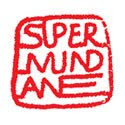I bought this book yesterday from my local bookshop (My Back Pages in Balham) and it encompassed pretty much everything I like about secondhand books.
I'd never heard of Jorge Amado but it looked like an interesting book so i decided to pick it up.
The cover looked strangely homo-erotic but from reading the back it turned out that Quincas Wateryell, the man in the portrait, was a womanising drunk and the tale was about his death (both of them) and the clash between his drunken lifestyle and that of his middle-class family. It sounded interesting and short enough to read in one sitting, so I paid my £3 and went to have a coffee.
Inside the book was why I like secondhand books so much.
I doubt that I would have ever come across Jorge Amado in a normal bookshop, finding a new author is always interesting, but this book had lots more to give than just its story.
Inside are semi-abstract line drawing by an artist called Emil Antonucci. I have no idea who he is and I can't find much information about him on the internet other than he was also a graphic designer. The illustrations have a wonderful unstructured quality about them that fit with the books content. I'm not sure if he did the cover as well, it is nothing at all like the drawings within and has a more kitsch feel. Personally I would have loved to have seen a cover in the same style as the internal pictures.
As well as these illustrations, on the title page a former owner of the book has crossed out the books title and written there own translation of the original Portuguese:
Read:
The Death and Death of Quincas Shoutwater
This is a terrible translation!
I agree with whoever wrote this that their translation is better, it sounds like a much more interesting book and Shoutwater is a more convincing name than Wateryell (and still works within the context of the book).
Finally, hidden amongst the pages was a tariff sheet for a New York hotel called Algonquin.
The sheet looks like it was probably from the eighties (there is a date written in the back of the book in pencil: 21/09/02, the book itself is a first edition printed in April 1980).
The hotel dates back to 1902, is still open and has a history of literary and theatrical lodgers.
All these things add up to my love of secondhand books. The story itself turn out to be really enjoyable and I'll look out for more Jorge Amado books. The drawings of Emil Antonucci are brilliant and inspirational - I'm already looking for other books he has illustrated. Finally, I'd like to think that the re-titling was done in the Hotel Algonuin by a pedantic, but failed, author during the craziness of eighties New York, but I guess I'll never know.
All that for £3.











